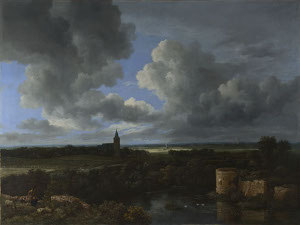The Left Hand of Darkness
by Ursula Le Guin.
This is the second Le Guin book I've read, following on closely from The Dispossessed. Like that book, this was a very good read: thoughtful and intelligent.
It's not a long novel, the paperback (yes, I read the dead tree version) being under 250 pages. Quality wrapped up in a small package.
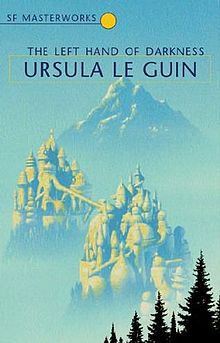
The Left Hand of Darkness tells the story of an envoy from the Ekumen, a commonwealth of planets, to the world of Winter (known to its inhabitants as Gethen). As the name suggests, Winter is a world of cold, harsh winter temperatures most of the year. The planet is being investigated for its readyness to become a part of the Ekumen and is therefore a form of first contact tale.
There is a similarity between this novel and The Dispossessed in at least one aspect: a contrast is drawn between two quite different societies. One is Karhide, a conservative, autocratic and old fashioned culture, scared of change. The other, Orgoreyn, is more organised and technocratic, but dissembling and cruel.
The big difference here though, and the defining aspect of the novel, is that the people of Gethen are sexless, neither male or female. Apart from a few days every lunar cycle (roughly 26 days), the natives are only latent and can be seen as potential males, or potential females. Le Guin explores what this might mean from multiple aspects: social, linguistic, political, economic and personal. The personal relationship that develops between the envy and Estraven, a native he completely misreads and distrusts initially, is the powerful core.
Like The Dispossessed, this is not a book full of action or excitement, although there are exciting parts and some action. The interest is in the meeting and eventual trust between the representatives of two alien cultures: one a terran man (the envoy) and the other a Gethenian. Until some understanding of the reality of life without gender, the envoy's mission and his life is in great danger.
Once again, an adventure book with extra depth from an interesting author.

A new toy to play with ...
Not actually a Christmas present but a few weeks ago I bought a decent DSLR camera for myself. I don't consider myself a "keen" photographer, but I did want to take better pictures and have more control. I bought a Canon EOS 700D, which seemed to have everything I'd need.
Now, a few weeks later, and having also bought a Dummies guide to the camera (my first such book - it's actually quite good), I'm taking a lot of pictures trying to figure out the various settings. And this is part of the beauty of a digital camera: instant feedback.
I'm old enough to remember when a taking a camera on holiday was very different: the speed of the film rolls, how many to buy, manually winding the film, putting them in to be developed, waiting a week and then discovering that half of then might be spoiled ... very different now!
Now I can take dozens or hundreds of pictures, see instantly what they're like, tune settings, try again. In fact, a camera like this has so many possible settings it can be quite overwhelming.
I've got a lot of playing around to do ... a lot of very bad photographs to take!
Another artist I came across recently, and again via Llewellyn Alexander, is Nancy Petley-Jones. Not as prolific as Pamela Kay but I've been impressed by what I've seen.
I like the sparkling water, muted colours and thin, wintry sunlight she captures on the Thames. Very impressionistic. In fact, reminds me a little of Monet.

Afternoon Light – Southbank, Oil
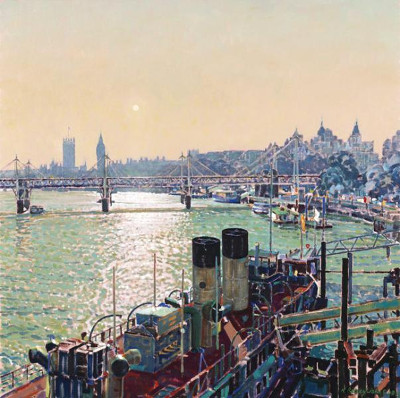
Towards Westminster
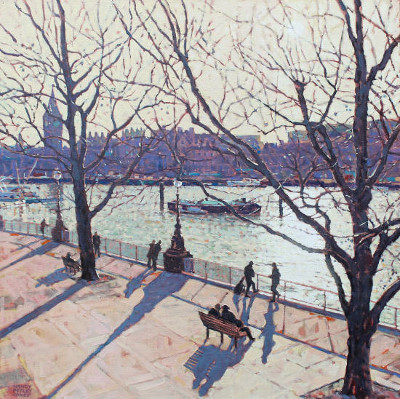
Afternoon Shadows – Southbank
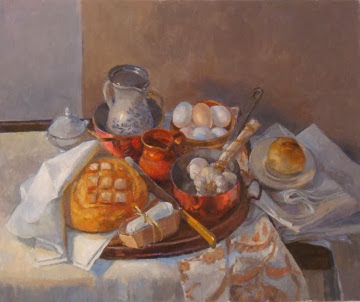
I've been meaning to post some short pieces naming some favourite living artists. Here's the first : Pamela Kay.
I first came across her work at the Llewellyn Alexander gallery. She paints a lot of still life and interiors and I like the way she handles colour, light and, particularly, her paint stroke (maybe the texture). Her work is also affordable, not silly money like some ask.
- http://pamelakaypaintings.blogspot.co.uk/
This seems to be her blog (perhaps) and she describes her work and how she paints. Always interesting to me: reading about the mechanics.
- http://www.pamelakayprints.com/pamela-kay-open-prints.asp
- Google Images
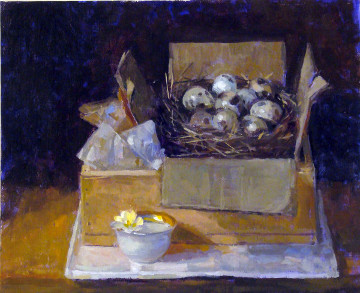
Still Life with Quails Eggs, Oil
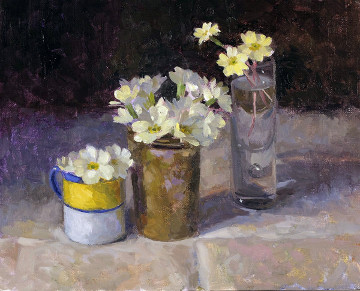
Primroses and the Monet Cup, Oil
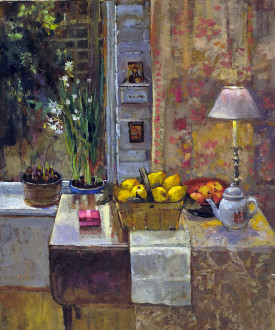
Interior with Basket of Quince, Oil
I like the Interior with Basket of Quince a lot. It's going for £3250.
The three paintings above are all from the Llewellyn Alexander gallery. Their page also includes prices.
Thomas Cromwell
by Tracy Borman
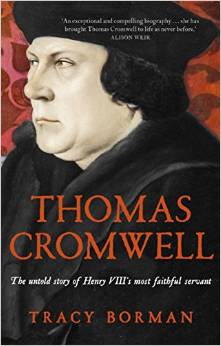
I've almost had enough of the Tudors - but not quite. it's hard to look away sometime, like a public execution. Of course, executions were fairly common around Henry's court. What a great cast as well!
I enjoyed Borman's book about the rise and fall of Henry's great minister but there were parts I found hard going, especially the numerous quotations from contemporary sources and all their variant spellings. It was often tough getting through these and I would have rather she spent more time in her own voice, expounding more background.
I think this period is one of the first where documentary records start getting much better but for someone of Cromwell's background, there are still many gaps unfortunately. He starts life at the bottom (something he is constantly reminded of by his noble born associates), clawing his way to the top by sheer hard work and talent. As well as his own, he has a skill in recognising talent in others. He rode the tiger but it did eventually turn round and devour him.
Cromwell died by the axe, and not the clean sword strike that took Boleyn's head. Judicially murdered essentially, but not before he had committed many others to a similar fate. A lasting legacy though and a fascinating character.
Homo homini lupus.
And of course, greatly looking forward to The Mirror and the Light.
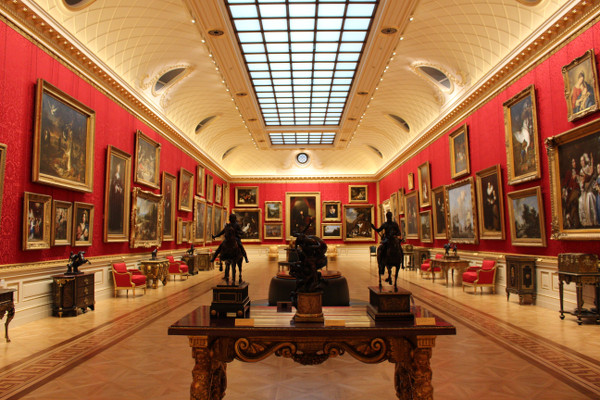
The Wallace Collection's Great Gallery is a very impressive, sumptuous room full of beautfiul works of art : Frans Hals, Van Dyck, Velasquez, Murillo and the list goes on. I was there on Saturday morning and almost alone in the room.
If you like French art, this is a very good place to be. Not only paintings, but furniture, sculpture, ceramics , even arms and armour (of course there are many Dutch, Flemish, Spanish and Italian works as well).
Here's a timelapse of the re-hanging completed in September :
And here's a video about one of their most famous paintings, Fragonard's The Swing. As Kenneth Clark pointed out, it takes civilisation to produce things like this.
My latest painting, from a Will Kemp course once again. This is 26x31cm acrylic on canvas :

It's a dark scene, and I was a bit concerned about how dark it was all going to come out. But I'm fairly happy with it in the end. It looks a lot better in real life though - the JPEG image tends to show up some poor colour quantisation in areas (although this highlights bad painting as well!).
Once again, as usual, it was hard gauging the proper hues and values from a print out of the reference, each printer I've tried produces a very different output, itself very different to what you see on your tablet screen. Colour calibration s a real bane of my life!
This is now varnished (with an isolation coat first) and I'm even thinking of a frame.

I did another smaller painting from the same photograph of just the oranges. Good practice while I'm set up for it. A quarter the size and not bad, although quite dark again.
This time about 16x21cm and acrylic on canvas paper.
The Dispossessed,
by Ursula Le Guin

A very pleasant surprise, I bought this on a whim and it turned out to be a gem! This is the first Ursula Le Guin I've read but I'll definitely try and pick up others now.
There are two planets, one the moon of the other (or vice versa?). The moon Anarres is a revolutionary, anarchist settlement that broke away from the planet Urras two centuries before. This break-up was so Urras could forestall a revolution. Urras is a planet more like our own: nation states, some capitalist, some authoritarian. inequality, war and private property. In contrast, Anarres has no private property, no government, a language that precludes the possessive case (which implies ownership) and a radical egalitarianism.

Shevek, the protagonist, is a physicist on Anarres working on a grand theory of time and space, with a potential for instantaneous communication. Quite a prize! He has an independent streak and feels unappreciated and increasingly shutdown on the anarchist world. He travels to Urras (the "propertarians!") with the hope of working on his mathematics in a spirit of scientific enquiry with fellow academics. Unfortunately he discovers that the Urrastians have their own agenda. Le Guin tells Shevek's story from childhood, through work and marriage and how he came to such a momentous step as leaving his wife and child, and whole life. The freedoms of Anarres can also stifle the non-conformist. People are people everywhere, good and bad.
Being classed as a science-fiction book, The Dispossessed will not get the audience it deserves, which is a shame because it is well written, sparse and effective, the story moving, intelligent and, in parts, very poignant. There's also a great deadpan humour as the characters grapple with unusual (to them) situations.
The themes are big: the organisation of society and its power structure, the way language impacts how we see the world and the place of the individual within the social fabric.But don't let that put you off because Le Guin engages these ideas through sympathetic characters, using a fantasy to better explore our own world and society. This is a book I enjoyed a great deal.
I used the title "Ambiguous Utopia". Quoting wikipedia on the book :
When first published, the book included the tagline: "The magnificent epic of an ambiguous utopia!" which was shortened by fans to "An ambiguous utopia" and adopted as a subtitle in certain editions. The major theme of the work is the ambiguity between different notions of utopia. Anarres is not presented as a perfect society, even within the constraints of what might define an anarchist utopia. Bureaucracy, stagnation, and power structures have problematized the revolution, as Shevek comes to realize throughout the course of the novel. Moreover, Le Guin has painted a very stark picture of the natural and environmental constraints on society. Anarres citizens are forced to contend with a relatively sparse and unfruitful world.
Emily Carr at the Dulwich Picture Gallery.

Emily Carr was a Canadian painter who worked mainly in the far North West of Canada in British Columbia. Painting in the first decades of the 20th Century, she is known in Canada for documenting the landscape and native peoples such as the Haida.
She has an exhibition at Dulwich just now and I had a look.
I don't think she ever had much money and this is reflected in the common use of paper rather than canvas for her oil paintings. She also often used petrol to thin her oils, another reflection of lack of means. Even so, an artist must create and she seems to have managed to get by with what she had. I especially liked the pictures below.


Since the wonderful Group of Seven show at Dulwich, I keep my eyes open for Canadian art shows.
A few years ago, the Dulwich Picture Gallery had an exhibition of work by the Canadian Group of Seven artists. It was a brilliant show and one I remember well, not least because I actually went back and bought a large art book about them (which I regularly flick through).
There's another Canadian artist at the gallery just now, Emily Carr. Her work looks interesting and I hope to pop down and have a closer look, but of immediate interest was some commentary about her show and the mention of a film about Tom Thomson called "West Wind".

Tom Thomson was not officially a part of the Group of Seven due to his tragic early death in 1917, but in spirit he was, and they acknowledged his inspiration.
There's some mystery about the circumstances of his death ("accidental drowning").
Right: In the Northland, Tom Thomson, 1915
His painting is beautiful and the film "West Wind" is available on Youtube (see below) and worth 40-odd minutes of your time.

One of the other artists of the group I particularly like is Lawren Harris, whose work seems to have an amazingly powerful inner light, at times almost hallucinogenic.
Right: The Red House, c. 1925.

Lots of wonderful paintings of snow, ice, light and reflection.
Right: Clouds, Lake Superior
Lawren Harris, 1923, oil on canvas

When I was little (10 or so), we had an art book in the house and I used to like looking through it. One picture in particular fascinated me. Little wonder something like this subject would interest a little boy : an anatomy lesson, a dead body with the top of the skull removed and the glistening pink brain on display! The artist: Rembrandt. This was my introduction to this great artist.
I met this painting in real life recently, unexpectedly on display at the National Gallery's Rembrandt: The Late Works.

Jeremy Paxman puts it well in his short video introduction to the exhibition: there is a humanity to Rembrandt's works, a way he manages to capture the real expression and inner life of his subjects, often beautifully.
I didn't always like his work, finding them a bit dark and sombre but the more I've seen, the more I now appreciate and love the work.
Left: Young Woman Sleeping, about 1654.

Right: The Apostle Bartholomew, about 1661
These pictures might sometimes show scenes from the ancient past but they're more than models dressed up. The people are gritty and real, like all of us. A great artist.
Art forger Tom Keating has a program on Rembrandt on Youtube, doing a painting in the style-of. Worth watching. It is quite amazing how much art technique a painter like Rembrandt had and how involved the production.
I've done another picture based on a Will Kemp tutorial: painting a glass of water. I'd not seen this exercise before but it was referred to in a lesson I downloaded, so I decided to try it before the "real" one.
First version (click for larger) is on "canvas style" oil/acrylic paper :
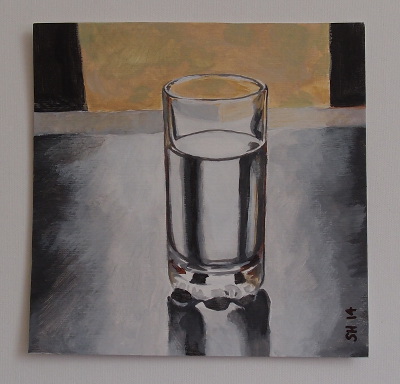
I wanted to see if I could do better blending on the table top, so this is version 2 (on 140lbs hot pressed watercolour paper) :
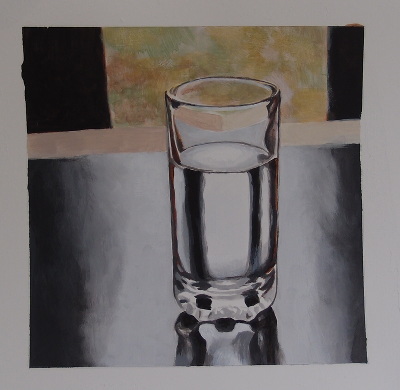
The answer was .. not really! It didn't quite work out the way I wanted, but not too bad in the end. I think I prefer version 1 though.
Right now, I'd like to try and get to grips with blending acrylic paint, something hard to do because they dry so quickly. To blend, there (really) needs to be wet paint. There seem to be various ways of dealing with this problem, including drying "retarders", more "open" acrylic paint, "glazing" mediums etc. It all gets a bit much.
So, just now I'm playing around with painting some test spheres in black and white, trying glazing medium, slow-dri blending medium and maybe other things. You don't need to do smooth blends when painting, but it is definitely one of those things I'd like to master for those times they're useful. The alternative is using oils, but that's a whole different can of worms! I think I have a high threshold tolerance for painting test spheres - we'll see.
Another thing that makes a difference to blending (via drying time) is the surface you paint on. I've noticed this after trying oil/acrylic painting canvas paper, watercolour paper, canvas board and proper canvas. Some surfaces absorb the water much more quickly, which means watercolour paper might not be ideal if you want to blend (but adding a gesso surface to it helps I think).
A blend using Watercolour paper (here 140lbs/300gsm, cold-pressed but fine grain) :

That's with plenty wet paint around!
A rougher, textured canvas paper :
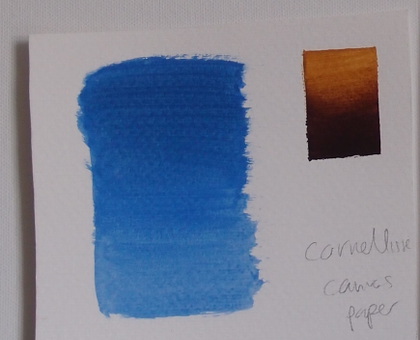
People demonstrating how to do acrylic blending (e.g. Youtube) often seem to show the above straight up-and-down rectangular type of example. The easiest to do! You really need to master something a bit harder e.g. spheres ...
Great North Road
By Peter F Hamilton
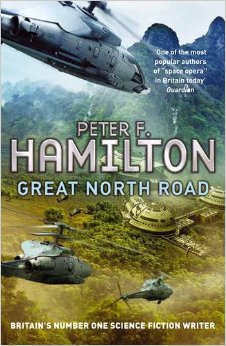
I read some Peter Hamilton books a long time ago and decided to check him out again.
I enjoyed his Commonwealth Saga series (Pandora's Star, Judas Unchained) and his Night's Dawn trilogy (The Reality Dysfunction,The Neutronium Alchemist,The Naked God). These books contain a detailed and well thought out future and some very exciting action. Pandora's Star includes a chilling and believeable alien race (with extra stress on alien).
On the negative side however, his books are extremely long, and well padded in places (tangential storylines and characters). This is also a big fault with Great North Road. The book is just far too long and not enough happens in it. The action that does occur doesn't grab you as much as it should, and happens too near the end, far too late. The rest is too pedestrian.
I haven't read his Void books but, with my reading list long, I am much less inclined to now.

I didn't know anything about this until Friday, and was reminded about it when I was in the area on Saturday morning and saw some people queing for it outside the Old Truman Brewery ( "London's revolutionary arts and media quarter" ...) on Brick Lane. I popped over on Sunday to have a look around.
The Other Art Fair is billed as a "platform for emerging artists", and it definitely veers to the newer, contemporary and "street" side of art. That's not to say that there weren't a lot of things I liked.
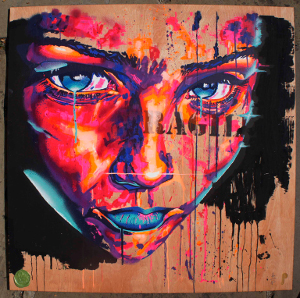
On the right, a painting from Rowan Newton, a South London artist in a "street" style. Big, colourful and pretty good.
This picture's on wood, there was another version on paper at its side (both for sale, I forget the price).
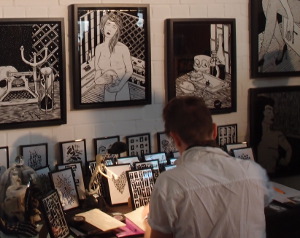
On the left, Benjamin Murphy at work. What appeared to be bold black and white brush work is actually cut out electrical tape. Looks like it must be a painstaking business putting the pictures together.
His art actually reminds me a little of Charles Burns, a comic artist. Do a Google image search to see what I mean (but warning: some weird stuff e.g. see the The New Yorker strangely enough).
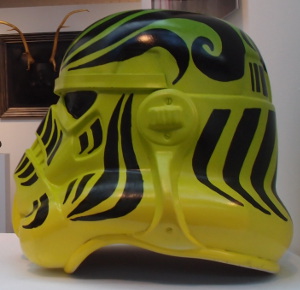
And a whole booth seemingly devoted to Star Wars Stormtrooper art. I'm sure there are plenty of people interested in this sort of thing (I've known a few).
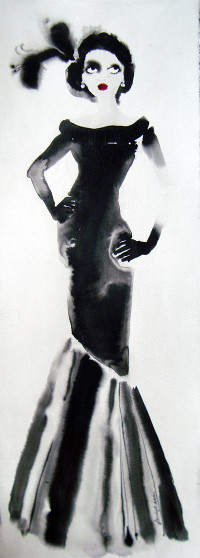
I also liked some of Bridget Davies long watercolours. Some are long as in a metre or so, but look good framed on the wall. Stylish.

The Constable exhibition at the V&A is titled The Making of a Master and shows Constable's growth as an artist and many of his influences down the years.
A lot to see in the show, each room has a theme (common practice now) and some rooms devoted to prints he might have owned, or borrowed to copy. Many prints are "after so-and-so" (e.g. After Rubens). In those days, collecting or looking at prints was the only way one could see a lot of art, second hand. No wonder some (well off) people built special cases for a painting so they could carry it around with them wherever they went.I've grown to really appreciate the 17th Century Dutch school of landscape painters, artists like Van Ruisdael : Constable learned a lot from them.
Right : A Landscape with a Ruined Castle and a Church, about 1665-70, Jacob van Ruisdael
However, he holds his own (and then some) in such august company. One of the best aspects of the exhibition is being able to stand in front of both the study and the final work. For some of his paintings, the study is large: as large as the final work. Big, momentous oil paintings, as big as Turner's, but otherwise very different.
Constable's The Leaping Horse is over 6 feet long and has an equally large oil "sketch" hanging beside it.
Below : The Leaping Horse 1825
Oil on canvas
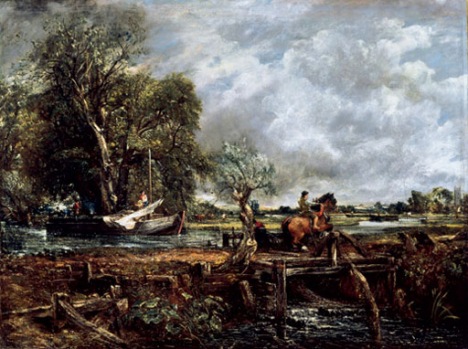
And his oil sketches stand out, one of the first artists to try and complete more of the painting out of doors, in front of the subject. As you'd expect, the weather often caused him problems, rain-drops running into the paint in some places.
Below : Willy Lott’s House 1816
Oil on paper laid on on canvas
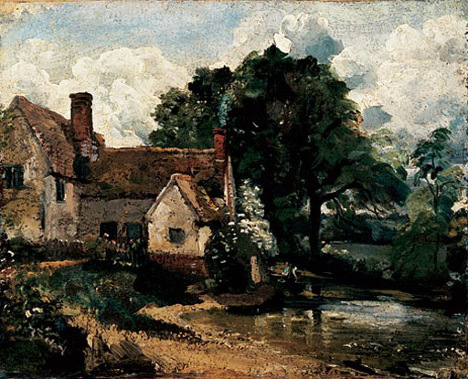
The Victoria and Albert's a good museum that I don't visit often enough. I couldn't resist some lunch in the very ornate café either!

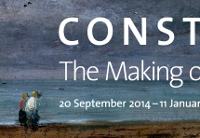
Walking around the Tate's Late Turner show, it's hard to believe that he was painting like this so long ago. That's over 150 years ago! It's hardly surprising that so many found his work strange and hard to fathom at the time.
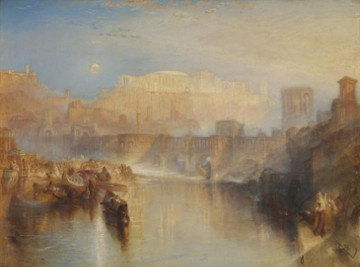
Ancient Rome; Agrippina Landing with the Ashes of
Germanicus exhibited 1839. Oil on canvas.
There are many large canvas paintings to savour here, with the trademark sweep of light and colour, quite abstract at times but always looking to capture that fleeting moment: the snow storm, the mist and fog, roaring water. Quite an amazing painter although one has to sympathise with the audience at the time, wondering what to make of it all.
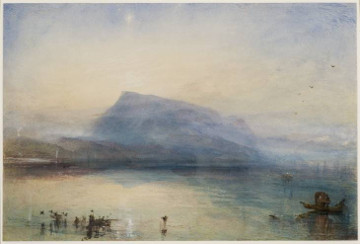
The Blue Rigi, Sunrise 1842. Watercolour on paper.
As well as the big pictures, a lot of smaller watercolours and sketches show off his virtuosity in this medium as well, not only the landscapes but the built features such castles, buildings and ruins. Some are beautifully finished and detailed, others more ghostly and atmospheric.
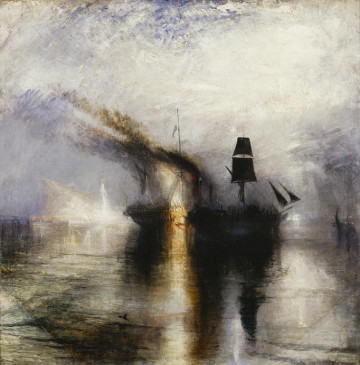
Peace - Burial at Sea exhibited 1842. Oil on canvas.
This is the first of three big exhibitions I was looking forward to. The others are Constable at the V&A, and soon the Rembrandt show at the National Gallery. The Tate's made a very good start.
I went back to the Fitzwilliam Museum in Cambridge, the second time I've been there. The last time was for an exhibition called Vermeer's Women (I blogged about it) but I didn't have time to have a proper look around the rest of the place. Now I have, I see what I missed.
The museum's been renovated recently and it shows. The rooms are bright, clean and spacious :
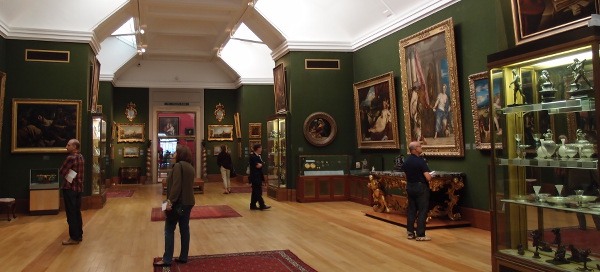
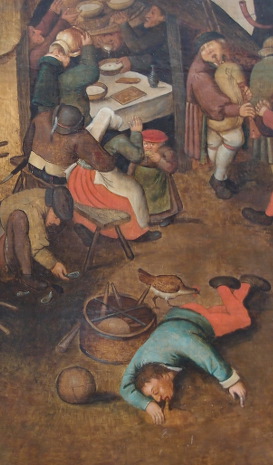
There's also a lot to see: the place is big and very ornate. A large collection of ancient world artifacts (Greece, Rome, Minoan, Persia, Egypt etc.), ceramics and pottery, as well as a lot of great art.
On the right: a detail from Pieter Brueguel the Younger's "Village Festival" showing how much has changed in the intervening 450 years!
The museum is a similar style to the British Museum, National Museum of Scotland, Kelvingrove and Hunterian, a big collection of lots of interesting things.
Like the other museums listed, it's free and only about 20 minutes from the station by foot.

This doesn't look like much (and it isn't!) except a very quick (under an hour), basic following of another Kemp tutorial.

Now I don't think much of it really, quite muted and washed out, although that's partly the point. But now I place it against the brick-work wall, and think about its place in a frame (perhaps), it's not so bad. It might even look quite good in a basic frame hanging amongst other farmhouse kitchen pictures.
Rather than use a more expensive 30x20-odd cm canvas frame, I used a smaller canvas board. These cheaper boards are a little odd to paint on, the paint not adhering so well really and too easy to push around on the surface. Maybe a poor tooth to the canvas. The acrylic paint is very translucent, almost a watercolour here really.
Hampstead Garden Suburb
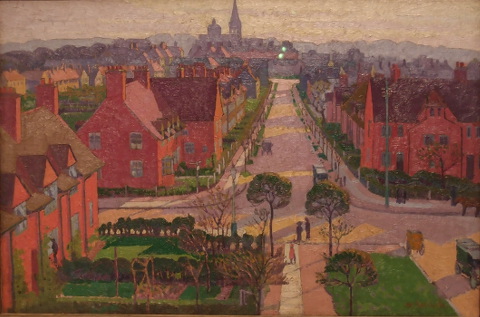
From Tate Britain, a nicely painted picture of London at the start of the last century, just before the big war. Printed beside the painting :
Philanthropist Henrietta Barnett devised Hampstead Garden Suburb, built in 1907, to provide mixed housing in pleasant surroundings in outer London.
William Radcliffe page at The Tate.
How times have changed. I wonder how "mixed" it is now, or how affordable?
I couldn't visit the Kelvingrove Museum again last week because, having got a train and then a bus, on getting there I came up to a sign telling me it was closed today "for a private event". This turned out to be some Ryder Cup thing.
The disappointment turned out to have a silver lining however because I decided to walk the 20 minutes over the River Kelvin and up to the university, braving a busy freshers week to have a look at the Hunterian museum and gallery.

What a lucky turn of events in fact! The museum and university was a very interesting find and, with so many fresh faces about, it was easy to have a good look and not stick out.

Glasgow University has some history, going back to the 15th Century, amd some of its buildings certainly have the historic feel, including the cloisters shown to the right.

On the left, the extremely beautiful and ornate staircase leading to the museum. The sun was streaming through the equally ornate windows giving the whole room a slightly magical feel, dust motes and all.

The museum itself is a classic old-style type, like the National Museum in Edinburgh, full of artifacts and curiosities, including a lot of Roman archaeology from digs at the Antonine Wall and medical oddities from William Hunter's collection.
Below: Roman shoes (man, woman,child) from the Bar Hill fort at Kirkintilloch, East Dumbartonshire.

On the other side of the road is the Hunterian Art Gallery, home to a small but good collection of paintings and drawings from the renaissance to modern times.
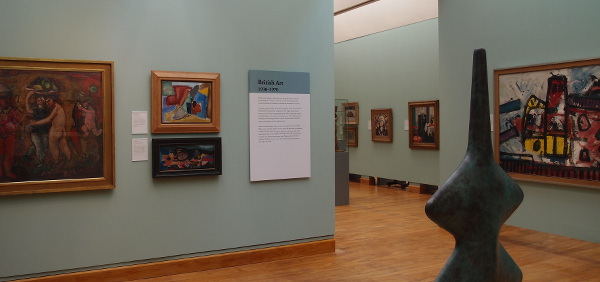

They have a lovely Chardin. On the right "A Lady Taking Tea", painted in 1735.
From the notes :
When Hunter acquired this painting, he is unlikely to have been aware of its exceptional place within the artist's career. Today Lady taking Tea is considered one of Chardin's greatest achievements. Its simplicity, composition and subtle balance of few colour accents embody the painter's very personal contribution to French genre painting.
The more Chardin I see, the more I appreciate him.

Plus some very good Scottish colourist paintings.
On the right, John Duncan Fergusson, Spring in Glasgow, 1942.
Overall, a very civilised day out and worth another visit.
I'm in Edinburgh just now and doing what I usually do when I'm up here visiting friends and family: check out the galleries and museums!
American Impressionism

The Museum of Modern Art has a good show on American Impressionism. Most of the artists are new to me but they hold their own against the French greats. A few Monet's were also on display, as well as some Mary Cassatt works.

Some very good paintings and very well laid out. I especially liked the twelve small "haystacks" surrounded by a large central painting by John Leslie Breck. Inspired by the Monet classic, it's quite a beautiful sight, especially the lighting and arrangement. Unfortunately, no photographs were allowed in the exhibition!
There were a lot of other artists represented here that were also very good. I bought the book and will try and mention more of them here.
Ruskin
The National Portrait Gallery has a Ruskin exhibition. Better known as an art critic and writer, Ruskin was also a good artist, particularly drawings and watercolours of mountains, buildings and even geology.

John Byrne
Also at the Portrait Gallery is a small show of pictures by John Byrne. I'd never heard of him until a few weeks ago when I came across a BBC program on You Tube called What do Artists Do All Day? Liking what I saw, I was looking forward to seeing his work in real life and it was well worth it. Large, colourful and accomplished pictures, many self-portraits.

Tesco Prize

Finally, I saw this small picture at the main National Gallery, part of a Tesco art prize for children. Bethany MacDonald draws a girl dancing. It's a good picture but I liked the way she's drawn the little face and hand poking round the curtain at the back, watching the performance!
This is for the Primary 4 to Primary 7 group, and she goes to the Flora Stevenson Primary School. More here.
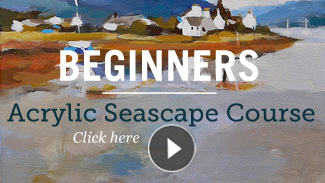
Another week and another painting exercise to bore people with! Not that I'm actually managing to spend a lot of time painting really. Every little seems to count though.
My latest is another from Will Kemp, this time a course, bought and downloaded.
The finished painting completed a week ago - a Scottish island landscape (click for a larger version) :
This is actually the second of two I did of the subject because I messed up the sky in the first version and started again (since "fixed, see below). The second stage of the painting was an optional addition of some "vibrancy" to the sky (which worked well) but the last stage started by toning it down again, which I screwed up (clouds went badly wrong, "plastic") ...
OK clouds (before my last stage) :

Turn into ... bad clouds ...

They turned much worse as I tried to fix them, the acrylic making the surface turn quite
"plastic" as I covered the canvas and lost its traction. I put the entire painting aside in (temporary)
disgust ...
I "fixed" the sky in the first version later whilst doing the second version :
Once again, I'm fairly happy with the outcome, although it was a bit up and down. I have to stress "fairly" there however because it didn't turn out as good as I hoped.
I found the hardest part being the clump of houses on the right, the layout and geometry of the roofs and walls. I couldn't get it quite right even though the drawing looked OK. Maybe my brushes were too big? But then Kemp's a believer in using larger brushes! Then again, it's not a photograph and it doesn't matter too much - it's impressionist.
Also, I find it hard not to paint to the tutor rather than the actual subject of the painting, paying more attention to what the teacher's doing than the reference picture. Hard to avoid in this sort of situation really but you don't always need to do everything they need to do really.
Right now it's a positive to follow the course whatever the style because the aim is to learn the basics and feel comfortable with the medium, but it's hard not to stray. In past years (long past!), I was much more of a detail person, so struggle not to jump in and get too involved too soon (as Kemp warns against).One thing I noticed this time around was how hard it is to calibrate the colour between the computer/tablet screen and my inkjet printer for the reference photo. I used a tablet to display the reference in the end because I just couldn't get proper colours printed. This is very like the problems cinema film colourists face when grading films.
I'm enjoying all of this so far anyway, even though it's frustrating sometimes. When it all comes together it's absolutely great. Art's the incessant search for the sublime, as someone like John Ruskin might have said. Or at least something you can give as a present without embarrassment.
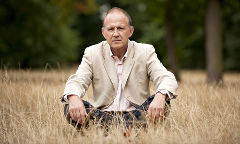
I read a very good short article by the author Tim Parks online in The Guardian the other day. It takes about 5 minutes to read, and is well worth the time. Have a look, it's funny as well :
Parks is an atheist and a sceptic and as an author he lives with words, "in his head" (as he says). He also believes in the rational fruits of science and the scientific method, thinks too much perhaps, maybe the classic over-thinking. He also has a serious problem with chronic pain in his "pelvic floor", something that had been plaguing him for years. In the end, medical science seemed to be doing nothing for him, however much he tried and the diagnosis for his chronic pain seemingly the null result: they can't find anything wrong.
Approaching despair, a serendipitous discovery led him to try healing himself with a relaxation technique (showing some surprising promise), which in turn led him to massage (shiatzu), finally leading him to try meditation. Parks doesn't believe in any "new age", or spirituality, in fact he's dismissive of it all. But by the end of his journey, he's quite a changed person.

His book is called Teach Us To Sit Still and I bought it on the strength of the article.
It really is one of the best and (in the end) most profound books I've read, entertaining as well as philosophical. People will wince (especially men) at some of the medical descriptions (with pictures unfortunately), but it's so well written, and funny, that you keep turning the pages. As becomes fairly plain in the book, Park's seems to "tussle" with himself, a far from relaxed man. The book is his argument with himself as he discovers what it is to relax and "let go".
I've been sitting, trying to do a daily meditation since the start of the year. I've read about the benefits of doing mindfulness meditation but a book like this is fantastic in showing the journey someone might take when doing the practice. As Tim Parks shows, it can be life-changing.
The book is highly rated on Amazon, with a lot of people describing how good a read it is. I completely agree.
Another painting, this the second of two (the same) I did a few weeks ago. Again, from a Will Kemp tutorial.
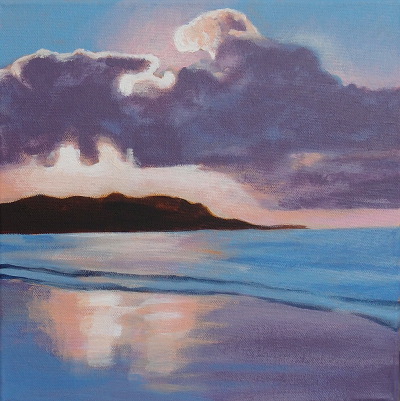
I did two because I wasn't happy with number one, but I'm not very happy with two either! (and this is why I debated whether to "publish" or not). In the end, why not?
It's a bit flat and unexciting, athough it is meant to be "painterly" i.e. not concerned with obsessing over fine detail etc. Maybe version three would be better but I lost interest in painting it! I never quite got the colours right (the oranges and pinks).
I've decided to try my hand at one of Kemp's paid lessons, so we'll see how that goes.
After doing this I did actually paint a little picture I'm very happy with. I won't display it here (yet) because it's to be a Christmas present. But painting something you really like is very satisfying.
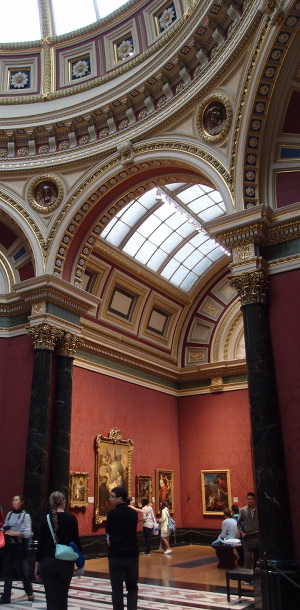
The National Gallery used to be quite strict: no photography. Not even of the big Sainsbury Wing staircase. Now it's all change. Quite a surprise, but a pleasant one. If you read the post at the Evening Standard, you'll note that not everyone is happy though. According to the gallery :
As the use of wi-fi will significantly increase the use of tablets and mobile devices it will become increasingly difficult for our gallery assistants to be able to distinguish between devices being used for engagement with the collection, or those being used for photography.
For that reason we have decided to change our policy on photography within the main collection galleries and allow it by members of the public for personal, non-commercial purposes.
I'm pleased because I like to be able to take photographs, not just of pictures I like, but of the rooms and spaces in the building. Or even the people. I often like to use the photo as a record of what struck my fancy that day, maybe research later or put on the blog.

I'm not sure I see too many downsides: there are always people standing in front of or around the popular paintings, and taking a photograph takes little time. It's a bit depressing seeing how many people seem to only see the painting (briefly) via an LCD screen before quickly moving on to the next display though. Not really looking at the pictures really, other than snap ... snap ... snap. There are some noisier cameras as well as annoying people. But hasn't it ever been so? The gallery staff still have to shout out on occasion when people try to take pictures of things they're not allowed to (most things from private collections, perhaps copyright issues).
Anyway,now I can take pictures of some of the great paintings on display, including the edge of a well known Van Gogh, the Chair, and zoom in closely :
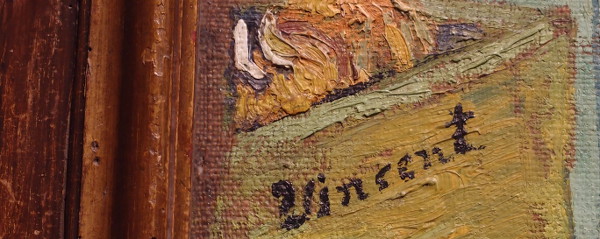
Look how rough the canvas is on the left, where it's bare of paint and meets the frame. It's almost like a hessian sack, and quite a shock compared to some of the smooth cotton canvas you buy in the art shop round the corner. It's a shame I can't run my finger over it to feel how rough! No wonder Van Gogh laid the paint on so thick sometimes.
And now for some watercolours ...
I came across Margaret Heath at the Llewellyn Alexander gallery at Waterloo and was struck by how beautiful her watercolours were. Some of the best I've seen : very technically and artistically accomplished.
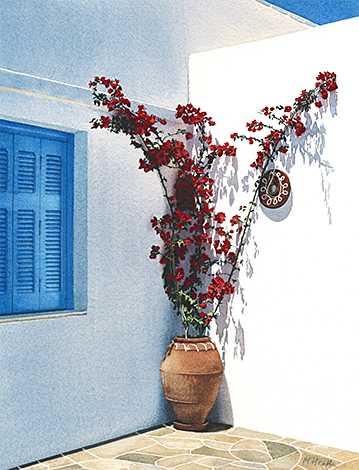
Summer Courtyard
From her web site :
Her paintings show the transient quality of light, often early in the morning and late in the day, that can make a scene look so beautiful. To be on a beach or cliff top, alongside a harbour wall or Venetian canal, and to show the viewer how wonderful it looked at that moment is her reason to paint.
And this original painting goes for £695 :
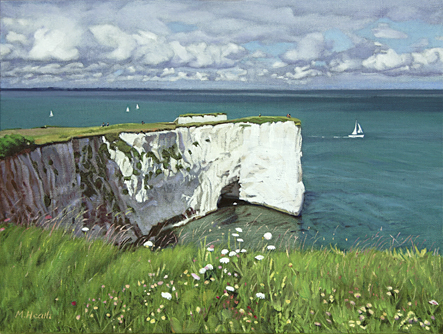
Handfast Point, Dorset
A lot of skill here and she really captures that special quality of watercolour art, the luminosity. Beautifully done.
Her web site has more : http://www.margaretheath.co.uk.
She will also be exhibiting at the Llewellyn Alexander gallery from 23rd October for three weeks,
I was at the Mall Galleries on Saturday to have a look at the Still Alive show, an annual show of "contemporary still life". This was the last day of the show.
A few of the artists I liked a lot, including some beautiful pastel painting by Ann Wilkinson. She had three pictures on display, one shown below :
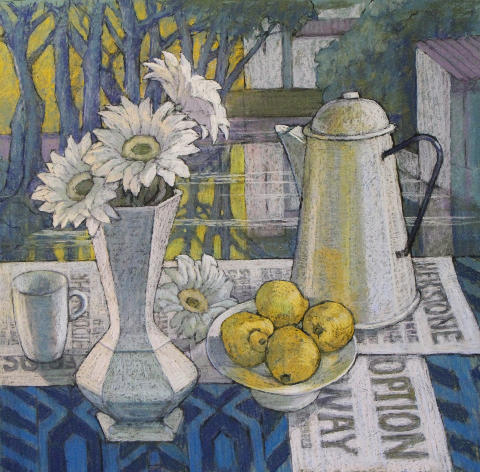
Still Life with Vase and Flowers
That was on sale for £850. Here's another from her web site (which seems a bit out of date) :
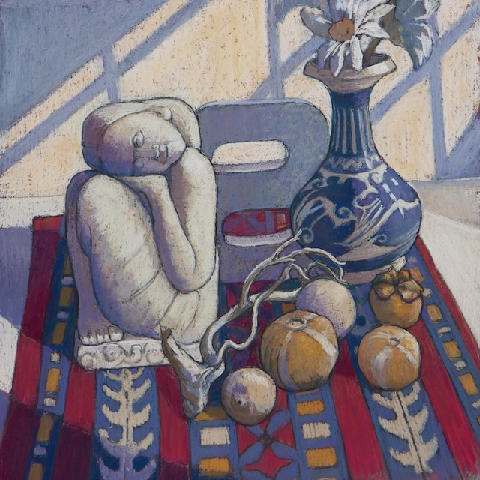
Still Life 7
Her web site has more.
Their perspectives on art were as disparate as their backgrounds. "Although Renoir’s first impulse to paint came from an almost naïve sensuous delight," Clark wrote in the Burlington Magazine, "he never imagined that the mere representation of agreeable objects was the end of painting." Keating begged to differ. “He loved young girls,” Keating told TV viewers. “Don’t we all?”
The above quote is from Jonathon Keats in Forbes comparing Keating's outlook on art to someone like Kenneth Clark (Baron Clark), of Civilisation fame. Tom Keating, the famous art forger, was pretty down to earth, one of the reasons people liked him.
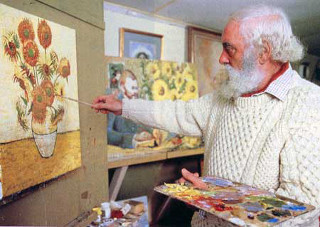
Keating died over thirty years ago but before he died he recorded a short series of TV programs for Channel4 called "Tom Keating on Painters". I think we are very lucky that he did these, and luckier that most have been uploaded to YouTube because they're fantastic programs for those interested in the techniques of the old masters.
The uploaded videos look like VHS quality, so not great. They also have poor audio (I need to crank the volume quite high) and bad subtitling unfortunately.
Leaving aside the transfer quality, what comes through is his enormous depth of knowledge on how these painters worked, often an extremely laborious process hardly used at all anymore (and with the knowledge increasingly lost). He knows what he's talking about and talks about it with great wit as well.
It's amazing how bad the paintings he does look at some stages, before clearing and becoming recognisable. At some points, it seems hard to believe the artist can recover the work having seemingly destroyed it!
A couple of good articles by Jonathon Keats describe his life and work (apologies for the poor interface in these pages) :
- Masterpieces For Everyone? The Case Of The Socialist Art Forger Tom Keating
- The Ultimate In Reality TV? Try Televised Art Forgery
And the YouTube videos :
Another painting, and again following a Will Kemp Art School lesson, this time How to paint like Monet.
The good thing about lessons like this is that you don't have to worry about choosing a subject, or composition, what colours to use or even what brushes: it's all chosen for you. Easier to get started and actually do something. Starting is often the hardest part.
The painting (click to enlarge) :
OK, not quite a Claude Monet, but I'm quite pleased with the way it turned out. A bit "tighter" and fussier than I'd like (and definitely more than Kemp's) but not bad.
I was never much of a landscape artist, preferring figure work, but right now the landscape suits me fine. The painting is also a lot looser than I'd ever do before. I would never have left the edge of the hill fuzzy, let alone smudged! No visible brush strokes if possible either. Of course, impressionism is often all about brush strokes.
And this was one of the points of the exercise: try and stop being too fussy and precise. Something I have to strain against is the desire to have the painting look good at every stage. It almost never does, often looking quite the opposite (crap) at the various stages it passes through (and this painting definitely did). It's hard but you have to put that aside and concentrate on what you're working towards. Something good hopefully.
Red Mars
by Kim Stanley Robinson
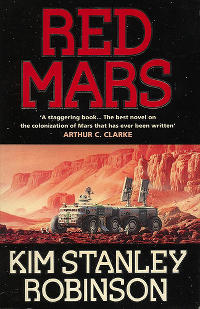
Red Mars, written by Kim Stanley Robinson in 1992, is a highly regarded novel about the human colonisation of Mars in the mid-21st Century.
It's a wonkish book in parts, analytical and scientific, and is good showing how the group of pioneering colonists (the first 100) deal with the challenges, social as well as technical. In this respect, it's a sociological study as well.
Robinson's research into the requirements of a Martian colony give the book a very believable edge. He also loves describing the planet's spectacular landscape, geography and geology, but perhaps at a slightly too great a length on occasion! Geologists may appreciate it a bit more.
The novel is much more than a science lesson though. Although some of the main characters are not very likeable, there is enough interesting discussion, and some excitement, to keep us reading. With planet Earth breaking up into war and conflict, increasing immigration to Mars and lots of tension between government and corporates, things start getting ugly.
So, hard science to a degree and sometimes the length of the discourse on the planet can drag, but I enjoyed the book quite a bit.
The political and sociological aspects of the story reminded me a little of Heinlein's The Moon is a Harsh Mistress, although Heinlein's novel is much more libertarian.

It was a toss up between the National Portrait Gallery with the BP Portrait Show or the National Gallery with Making Colour. I decided on Making Colour on Sunday, the paid show, and will check out the portraits over the week.
Making Colour is about the colour in paint pigment: where the colour comes from and how it's created and bound (such as egg yolk for egg tempera or oil for oil paint). The technology of paint changed once the industrial revolution kicked into gear, to the great benefit of artists.
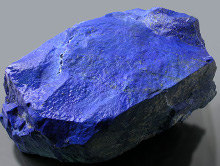
Today we generally don't care where the things we buy come from, or how they were made, but much of what we take for granted didn't exist, or was very expensive. Colours themselves were extremely expensive sometimes and paint didn't come in an easy to handle tube. For this reason, artists were as much artisans and had to learn a huge amount of technical preparation and mixing, in addition to the creative side of their work. A lot of paint pigment is ground up "rock": consider the "earth" colours like raw umber. Historically, the most expensive have been the rarest, like Lapis Lazuli, mined in far away Afghanistan, giving the rare and intense Ultramarine blue. An artist's contract would often be very specific in requiring the use of real ultramarine for the Virgin's coat.
The Wilton Diptych (below) is a very good example of the beautiful blue you can create with ultramarine. This picture was not shown in the exhibition but is one I always think of when I think of a striking blue colour. It really has to be seen in person to appreciate how intense it is.
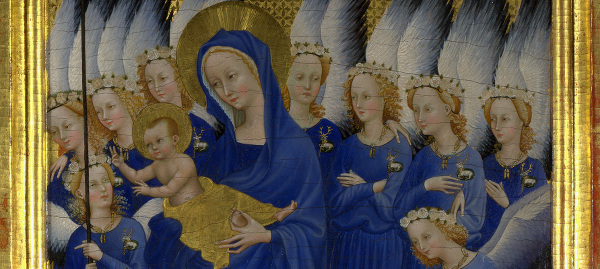 Wilton Diptych, 1395-9.
Wilton Diptych, 1395-9.
Today, Ultramarine is easily affordable and has been chemically synthesised from the early 19th Century.
Another couple of paintings that I thought worth remarking on are below, both unknown to me. The Moroni painting Portrait of a Lady is large and imposing, rather like the sitter. I loved her expression: slightly pursed, a hint of a smile. She seems a bit pleased with herself, perhaps pleased with her beautiful dress.
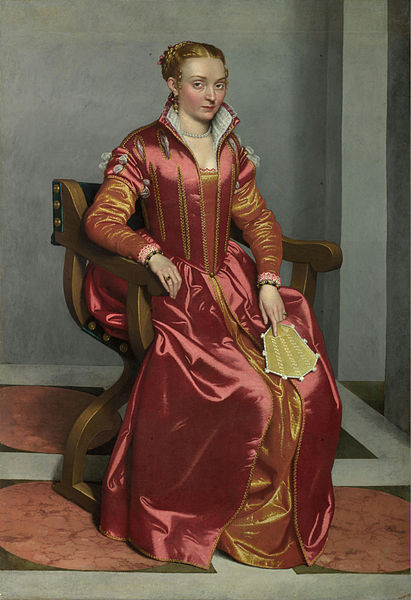
Portrait of a Lady ('La Dama in Rosso').
Giovanni Battista Moroni. 1556-60.
The full size painting is a real fashion statement. Great colour of course, and very bright.
The second painting is by Elisabeth Louise Vigée Le Brun, working in the late 18th Century in France, an exciting time to be alive (especially if you were patronised particularly by Queen Marie Antoinette. She has a straw hat on and she's working, her palette in her left hand.
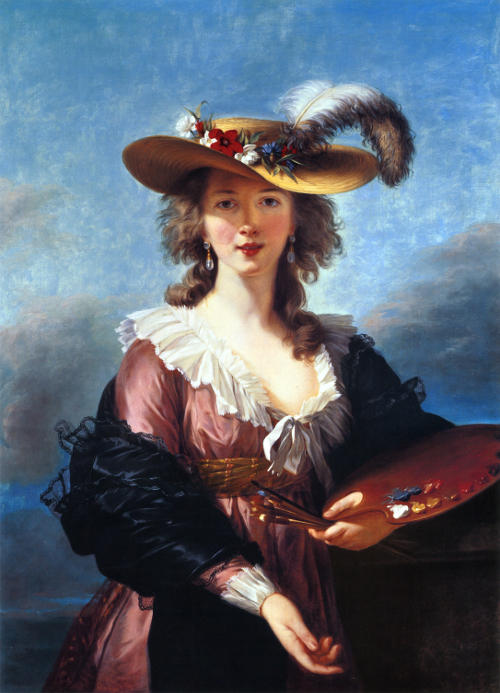
Self Portrait in a Straw Hat.
Elisabeth Louise Vigée Le Brun. 1782.
The full size painting.
I like this painting a lot. Not only a pretty face, but a nice loose, bright painting. Not formalised like a Ingres or David.
I've been down to the NPG to see the 2014 Portrait Award show now and, as usual, it is very good. There are a huge number of very good artists around today, many very technically accomplished. This show consistently has a high standard.
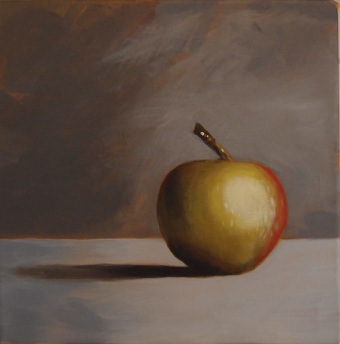
An apple. A start anyway!
This is an acrylic painting of an apple - see below for the inspiration. I've been wanting to do some painting for a while, something I used to do a lot of before being distracted with work and life. It's been a long time.
I can't say that I love the painting, or that I think it's very good, but it's not bad and I'm quite happy with it. As a first attempt anyway. I think my photograph of it leaves a little to be desired as well ...
I find acrylics much easier to deal with than oil paints, mainly due to them being water based, so no smells or complex preparation or clean-up. This makes a big difference when you don't have much space (let alone time).
Hopefully more to come. I have a lot to learn.
The inspiration for this, and the source of the above apple is Will Kemp's Art School. He not only has a great web site devoted to all aspects of painting and drawing but a huge enthusiasm. His willingness to share his knowledge and help out is absolutely wonderful (popping up all the time in the comments) - I don't know how he finds the time. Also check out his YouTube channel. I find watching people paint fascinating. A very refreshing site and a great teacher. Thanks Will!
Another recent Adobe Flash security update has me at the Adobe site again, trying to remember the update process for Linux. I use the 64 bit version and have to un-tar the archive and copy the .so to the right folder.
Adobe stopped shipping new versions of Flash for Linux a while back, but promised to keep the Linux versions updated for security (Thanks Adobe). But it's still odd seeing the different versions available for the other platforms.
I have :

Windows, Mac and Google Chrome have :

Note that the version Adobe say is the latest for Linux is wrong - 378, compared to what I just downloaded and installed - 394. Who knows? Security is hard, as is updating web pages!
Not a fan of Flash and I look forward to it disappearing. But I'm even less a fan of computer security problems, and especially the people that inflict them on us. So keep your software up to date!
Life After Life, by Kate Atkinson

When I bought this book, looking for something of a change, all I knew about it was that it was highly regarded and had won a prize (Costa Award). I don't think I'd heard of Kate Atkinson. However, I was not long into it before realising that it promised to be one of the best I'd ever read. This doesn't happen very often and nearer the end, I really didn't want it to finish.
A very finely told story of a girl and her family, the effects of the First World War and then the Second. The characters, and particularly the family life, are so beautifully realised. And the big difference to Ursula's life is that it ends, very early. But then starts again. Ends, Starts. And every time her path through life is different and we see and learn new things from different perspectives.
The book is very funny, as well as sad, even grim on occasion. It is also unforgettable and extremely moving. I can't recommend it enough. It's a book I look forward to reading again.
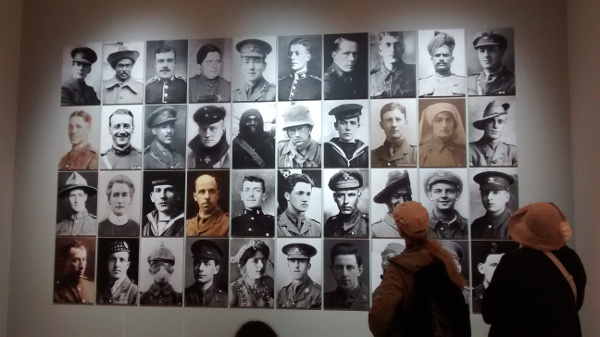
Above, a wall display in at the National Portrait Gallery exhibition The Great War in Portraits. This is The Valiant and the Damned room.
Cutting across nationality, age, gender, background, role and responsibility, the group below includes medal-winners, heroes and celebrities, interspersed with those wounded, killed in action or shot at dawn. Between these poles of experience are poets, artists, memoirists, nurses, conscientious objectors, representatives of the British Commonwealth and those exemplifying the important part played by women.

The gallery web site has an interactive page where you can select each person and read a bit of background. Some famous names here, including Wilfred Owen, Siegfried Sassoon, Von Richthofen and Mata Hari. Also some unusual ones, like a Maori and an Afro-Caribbean officer.
On the right, a German soldier wears an "improvised gas mask".
The exhibition finished on Sunday 15th June and was free. Small but worthwhile. The web site has some very good content. As well as the Valiant and the Damned page above, there is also a Curator's Tour.

The second of the two Mantel stage adaptations, after Wolf Hall a couple of weeks ago.
I was not disappointed. This was another masterful production, wonderful script and great acting. The RSC and everyone involved have made a real masterpiece. Laugh out loud funny at times, at others a dread horror at what's happening on stage (a silent theatre, pin-drop).
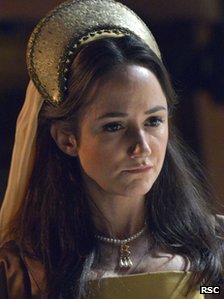
Telling the story of the downfall of Anne Boleyn, the machinations that take place are nothing if not like the Italian Mafia as fictionalised in Coppola's Godfather films. Cromwell is charming and witty but he is also cold, calculating and ruthless as he tries to do the King's bidding in the Tudor court. He has to have his wits about him because the double-dealing, plotting and hatreds run deep.
As the play reaches its climax, one starts to feel the chill as we get to see some of the darker methods at play, as Cromwell works his way around the Queen's inner circle, probing for information, weakness. We also start to see bit more of the child-like Jane Seymour, a girl Henry's become infactuated with: no artifice here, no worldliness at all it seems. Jane is portrayed as painfully shy, empty-headed and witless, She doesn't deserve what's in store: we know how this story ends.
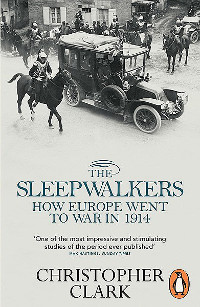
Who started the First World War? This is something that Christopher Clark, an Australian historian, considers in his recent book The Sleepwalkers. This year is the centenary of the start of the "war to end all wars" and his book has been very well received.
So who did start the war? Lots of people, some eminent, have expended a great deal of time, money and effort trying to determine the answer to that. It's proven very hard to nail down. For a start, this is not an exact science, but a lot of pre-war action and debate has been hidden, obfuscated or forgotten as well.
Clark assigns blame very liberally, with no one really understanding what a calamity the war would be, and no one realising how long it would last. The world was different and the power blocs were increasinly locked into alliances that set rigid "red lines", promising aggressive action (i.e. war) that should never have been countenanced before. Much less flexibility. Everyone seemed to consider themselves as having their backs to the wall and seeing their behaviour as defensive, even as their armies crossed national borders.
Like many boys, I was fascinated with war, battles and the two big wars of the 20th Century. But the books I read were much more interested in the actual fighting of the war than their causes. In fact, my most abiding memory now of this history is more the literary, and the great war poets like Wilfred Owen.
This book definitely shatters a few myths however.
The biggest one is that Germany was the primary cause and the major aggressor. It is hard to read this book and still believe that. Although it certainly bore much blame, in the hierarchy of causes, France and Russia sit as high, or even higher. And let's not forget Serbia, a nation dreaming of a mythical past glory almost within its grasp again, reuniting a Southern Slavdom under its leadership. Willing to use every underhand and odious means to progress this e.g. The Black Hand.
Yes, lots of blame to pass around. A good book and a useful reminder that history and propaganda are sometimes far too comfortable bed-fellows.

People might know how highly I rate Mantel's Wolf Hall and Bring Up the Bodies. Amongst the best books I've read.
Earlier this week I went to see a stage production of Wolf Hall at the Aldwych Theatre. It was superb. Back when I first heard of the planned theatre shows, I worried that an abridgement and transfer wouldn't work in the theatre. Luckily I was very wrong. The reviews that started to appear were all so glowing, I was completely mistaken in worrying about the stage version, and should have trusted the skill of the Royal Shakespeare Company.

The books are beautifully written, a real pleasure to read, and the highlight of the stage play is how well they has been adapted by Mike Poulton. Alongside such a good script, the acting was also first class.
Having bought a ticket for Wolf Hall, I've now got one for Bring Up the Bodies in a week. If you get a chance to see these, take it!
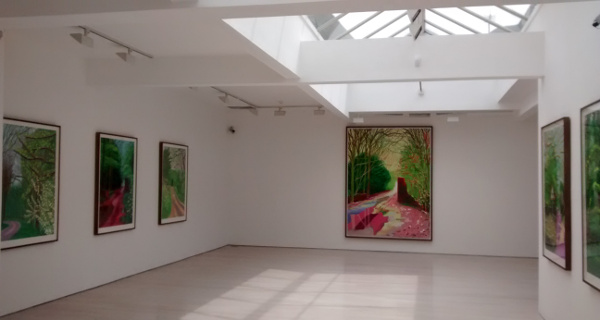
I've never been a big admirer of David Hockney's work in general but really liked the colourful landscapes he's started "painting" in the last few years. Since his return to England from America he's been experimenting with creating very colourful art on his iPad.
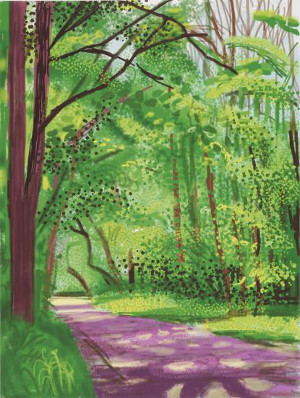
Many charcoal studies and the full colour prints of his iPad landscapes are on show at Annely Juda Fine Art in London.
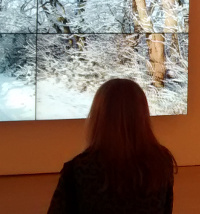
The pictures are large and very striking! Including a lovely slow tracking shot of a snowy country road on a bank of TV's (at least when I was there). He paints the same scene at very different times of the year: summer, rain, snow.
The gallery has a good Hockney page with lots of other paintings to see, some excellent. His golden age perhaps.

Gododdin
A strange word that caught my eye in the title of a BBC Radio 3 feature a few years ago, In Search of the Gododdin. Reading the summary piqued my interest even more :

Fourteen centuries ago an elite band of three hundred warriors set out from Edinburgh and marched south to Catterick in Yorkshire to meet a force of 10,000 Saxons in a bloody pitched battle. At the end of a week of ferocious combat all but three of the 300 lay dead and, with them, the last hope of the Old North - the original Britons - against the Saxon invaders. But the battle left an enduring literary legacy: one of the three survivors, Aneirin, fled back to Edinburgh and composed the Gododdin, an epic poem to commemorate his fallen comrades.
Of course it's not quite as simple as that, and we have to leave aside the numbers, but what an introduction to something I'd not only never heard of, but had no idea of a context for.
An epic poem called the Y Gododdin, written in early medieval Welsh, perhaps written in Din Eidyn (Edinburgh) and commemorating a battle in England between Britons and Angles.
There's a massive amount here we don't know for certain, a lot of conjecture, myth. We learn a standard history that often starts with the Romans, skips to a bit of Anglo-Saxons, jumps to the Normans and from then it's a quick romp to Empire and the Victorian 19th Century

There's much less certainty in the "Dark Ages" but we have to remember how much of our history is buried in odd corners like the Y Gododdin and the original tribes of Britain. These tribes didn't go away and were not exterminated. They're still here.

Jamie Hewlett, exhibition cover
On Saturday morning I had a look around the new Comics Unmasked exhibition at the British Library.
Another occasion where my Art Pass came in handy, I had a great time taking a leisurely stroll around the show and seeing how much stuff on display I recognised, or even owned.
I've liked comics for as long as I can remember, although I stopped buying them for a long time and have only bought a few in more recent years. Dipping my toes in the water again, the first thing I noticed was how beautiful the production quality had become, even for smaller press and limited edition work. The comics and graphic novel scene has really come of age over the past twenty years.
There are a lot of different styles on display here but the most interesting parts for me cover the 60's onwards. As part of the breakdowns (the psychedelic bit), we even get some Crowley and Burroughs. I'd known of the infamous "kids" issue of Oz, and knew of the obscenity trial, but never actually seen it: and now see Rupert the Bear in a different light (even it was really ripping off Crumb basically).
Thankfully, Rupert Bear was not represented elsewhere in the show.

Warrior magazine. Original home
for V for Vendetta
Yes, lots of subversion, and politics, generally left-wing, although some a more finely tuned flavour of anarchism. The agitations of the 60's and 70's seem to have been diluted somewhat and is less crude. You might say grown-up really, and I'd say that the end result is a lot better (and funnier).
Alan Moore (Watchmen, V for Vendetta etc.) is very well represented, and deservedly so. But many other comics writers and artists are also given good exposure here, including Grant Morrison, Dave McKean, Pat Mills, Simon Bisley, Pete Milligan, Brendan McCarthy, Jamie Hewlett, Posy Simmonds and Bryan Talbot.
An amazing amount of talent has flowed from these islands over the past 30-40 years.
A lot of memories were brought back here for me. I still have a lot of comics and art stacked away, unseen for quite a long time now, and I'm feeling an urge to dig it all out again. Like most things nowadays though, it all comes down to time and, in this instance, space. Space to stretch it all out and digest it properly.

Simon Bisley's Slaine
Afterwards, I resisted the temptation to scramble down to the nearest comics shop and spend loads of money. That's what the exhibition shop was for!
Leonardo Da Vinci, The Flights of the Mind
by Charles Nicholl
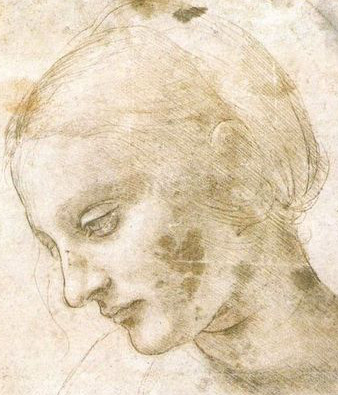
A very remarkable man even for the times, and the times were full of quite remarkable people.
It is quite something to think of how much talent and genius was alive in late 15th and early 16th Century Italy. Leonardo's life crossed Michelangelo, Verrocchio, the Medici, the Sforza, the Borgia, Machiavelli, Bramante plus a few Kings and Princes.
Perhaps he was the original "Renaissance Man" although I see the Wikipedia page on Michelangelo mentions that in regards to this other great artist.
The Windsor's seem to have managed to collect a lot of his drawings and I was lucky enough to see them when they were exhibited at Holyrood last year. The drawings themselves are beautifully done but the text is hard to decipher: it's in Italian but also written in mirror script (so backwards). Leonardo was famous for writing notes this way, whether for secrecy or some other reason isn't clear.

Virgin of the Rocks (detail), 1506-8
The National Gallery also had a Leonardo exhibition a couple of years ago (time flies, I almost said last year). Unfortunately I didn't manage to get in to see it, leaving it too late to get a ticket. It was so popular that the queues snaked all the way out to the street. Very disappointing.
I wrote a post about the queue on this blog!
Charles Nicholl has written a very readable and interesting book, not only about the man himself but also his life and times in the Italy of the renaissance. The small details of his shopping list, arguments or notes on his projects, often written in the margins of a notebook. Never a prolific painter, we don't have many finished works of his. Some are lost, some unfinished but many never started. He churned out ideas and notes, not art. I almost added "unfortunately" but how can I be anything but thankful for what he's left us?
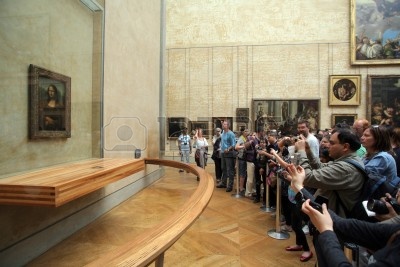
As for Lisa Gherardini, wife of Francesco del Giocondo, Florentine housewife and mother, I really need to pop over to Paris and have another look. How much will I be able to make out though?
The rest of the Louvre is worth another visit as well however.
More on Leonardo at the National Gallery web site.
Dark Market, by Misha Glenny.

I bought Dark Market a couple of years ago and am ashamed to say that I only just got around to reading it. I say ashamed because it was quite riveting as Glenny puts together a hike through some of the darker fringes of the internet.
The book covers the emergence of the online "carding" forums: web sites for the discussion and dissemination of the tools and knowledge to take part in crimes like credit card fraud, ATM and card skimming, phishing and botnets. This sort of criminal activity has a long history now but far from being the preserve of the amateur hacker nerd doing things for reputation or kicks, it has grown into a very major, global criminal enterprise. Think Mafia. Think professional criminals and some very nasty people, sometimes even affiliated with state or secret security services. Rich pickings are available and it's usually hard to investigate and hard to prosecute.
Of particular relevance just now, the book starts in a particular time and place: the mid nineties and Ukraine. With Russia, the post-Soviet Ukraine became a ground-zero for a massive amount of criminality, including internet fraud. Under the radar of most, a huge illegal industry grew in Ukraine and for many years the people involved seemed to be untouchable, protected by bribery and corruption. This stuff if far from being the preserve of script kiddies or amateurs laughing at authority.
An absorbing book. Well written and easy to read. Highly recommended.

Brian Krebs is mentioned in the book and has a very good web site if you're interested in this stuff :
Including a series all about ATM skimmers. Be careful out there!

The King in the North, by Max Adams.
There's a scene in the first season of the TV series Game of Thrones where Robb Stark and his followers debate their next move now that his father is dead. War looks likely and the son is heir to House Stark and lordship over the northern kingdom of Winterfell. The scene ends with him being acclaimed as King: "King in the North!". A rousing scene, and adds some power to is the fact that all the voices you hear actually have Northern English accents.
This crossed my mind when I saw the title of Max Adams' book about England's dark age northern kingdom, Northumbria.
Having read and enjoyed this book, I can see many parallels between the world George R.R. Martin creates for his series and the world of post-Roman Britain in the early 7th Century. A real Game of Thrones plays out, as competing Kings, Warlords and peoples battle it out for supremacy over Britain, or as much of it as they can hold.
Adams tells the story of Oswald Whiteblade, who returns from exile in Dál Riata (in what is now North Western Scotland), to win a battle and claim the throne of Northumbria in the year 634. Northumbria, the unified kingdoms of Deira and Bernicia, stretched from the Humber (Hull, Grimsby) all the way up to Lothian in Southern Scotland at this time.
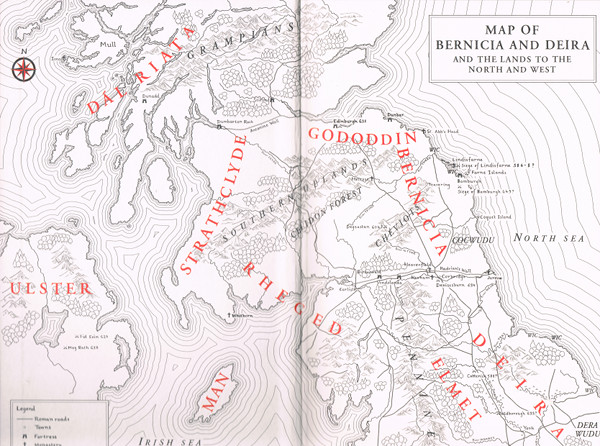
The 7th Century was particularly important for Christianity in Britain and much of what we know of the times was set down by the monk and historian Bede. One of the striking aspects of Adams' history is how important the Irish missionary work was to the restoration of the faith in the years after the Roman withdrawal. St Columba (or Colm Cille as Adams calls him) had made a much surer and deeper impact in the north of the country and this was cemented by such deeply religious men as Aidan. Aidan was the founder and first bishop of the monastery of Lindisfarne, a daughter institution of Columba's Ionan monastery. Oswald spent his early years as an exile in Dál Riata and his Christianity was Irish and British rather than Roman.

This is a well written and interesting book about a subject that seems to have almost faded from history today. A world where Britain had its own warring states period like the Chinese, although "state" is not really the right word. As Adams says, when the King or Warlord died (many in battle), their Kingdom would often fall apart. Oswald met a particularly grisly end in life. His afterlife has been very illustrious however: veneration as a saint.

It's been a very long time since I've played around configuring X Windows on Linux but I've recently had the "pleasure" again. X mostly just works now, and there's no more need to fight monitor modelines or an arcane xorg.conf file (the file usually doesn't even exist anymore). This is a very good thing because X setup was sometimes a nightmare.
For the past few years, I've done well to steer clear of proprietary graphics drivers as well, drivers for hardware like ATI/AMD or NVIDIA. I've choosen Intel graphics hardware because Intel's writing good open-source drivers. If I happen to be using ATI/AMD or NVIDIA hardware, I try and use the nouveau or the radeon driver.
X was the only big component of the Linux desktop stack that I never compiled from source, back in the mid-1990's (when X was "XFree86"). Too scary, and perhaps my 486 CPU, 128MB RAM and 33.6 baud modem weren't so up to it.

Not my graphics card
When I bought a cheap(ish) laptop to use as my "desktop" (TV/HDMI connected) a year or so ago, I hit a small snag in that it's based around an AMD chipset for graphics (and HDMI audio) and an Atheros for ethernet. I had to download, compile and load an out-of-tree Linux kernel module to get the ethernet working. Very 1990's.
An out-of-tree module means you have to remember to rebuild it if you ever upgrade your kernel. Luckily, the ethernet module (alx) is now "in-tree" from 3.11 and I'm using Debian Wheezy backports.
Generally, all's been well. I don't play computer games so have no need for fast 3D, just decent 2D performance. I'm not sure what happened but a while ago I noticed that full-screen desktop video had got very choppy (tearing). The desktop felt "stickier" than usual. So, I decided to (perhaps foolishly) try the proprietary AMD Catalyst driver and see if things are better.
Past experience with graphics driver updates on Linux have been varied, to say the least. I recall painful times and black screens, but this was a long time ago and I have much more experience and confidence now. This stuff is generally still a bit of a black art if things don't work out though!
Got the Catalyst 13.12 release driver installed and working, after a bit of messing around. A bit more playing with xrandr on the laptop to sort out display outputs to laptop, TV and/or both. Made sure I was using kernel 3.11 from backports as well and that the AMD driver supported this. Result? Video playback seemed good now and all appeared well (plus it didn't take long). Success! Or so I thought ...
A Key Problem

A problem quickly manifested itself during the week: key press delays in X applications.
Pressing a key in the web browser search box (for instance), would exhibit 1/2 second delays occasionally. Maybe 1 or 2 seconds sometimes. Consoles were fine: at least konsole and rxvt. Laptop keyboard directly or USB keyboard showed the same issue ... very annoying.
So, on the merry-go-round again ...
To investigate, I planned another look at X for a Saturday. This time I updated the kernel to a new backports version 3.12, and downloaded and installed the AMD Catalyst driver 13.11-beta (which said it supports kernel 3.12). A bit of trouble :
- I had to do a force install because the previous AMD driver didn't want to --uninstall.
- I had to do some symlinking to link libGL.so.* from /usr/lib to /usr/lib64 (not sure why this was wrong - poor AMD/ATI Debian x64 support?).
But still the same key press problem ...
Key presses worked fine with the radeon driver but not the AMD driver. So I started to look at X Server options, starting with the "easy" stuff via the memorably named amdcccle, the AMD graphics control centre (a graphical application).
I enabled the "tear free" control (sync to vertical refresh), which was off, and this seemed to fix my key press delay trouble.
Apparently, I could have used the following command to enable this as well :
aticonfig --set-pcs-u32=DDX,EnableTearFreeDesktop,1
Thank goodness for that!
At the end here, I was going to start up the control centre and get a small screenshot of it. But it gave me a segmentation fault ... ugghh.
X Windows is due to get a replacement in Wayland at some point in the future. I can't say I'll miss it. In fact, there are a few quite exciting developments happening in desktop Linux-land just now so it should be an interesting year or two.
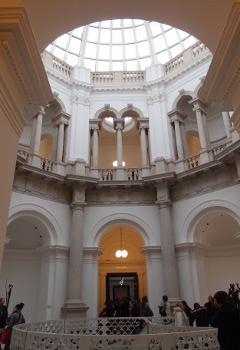
I had to fit some new brake pads on the bike at the weekend and to test them I went out for a ride. So down to Millbank to have a look in Tate Britain. I knew there had been some changes recently.
New brake pads: what a difference they make! I should definitely fit them earlier in the future. One of the four I replaced was almost bare metal ...
The Tate has recently re-opened a lot of new and renovated areas, including its rotunda and staircase. It's a beautiful and light space at the front. The gallery also feels larger (it's always seemed much bigger on the inside) and shows more of its art. A really great improvement to a great gallery. The Whistler resturant downstairs (named for the murals created by artist Rex Whistler) also looked very stylish and swanky (from the outside). Must visit!
I took some pictures. This is another big positive at the Tate: pictures are allowed and no one's bothering you about having a backpack on your back, unlike other galleries.
Atkinson Grimshaw, Liverpool Quay by Moonlight, 1887 (link) :
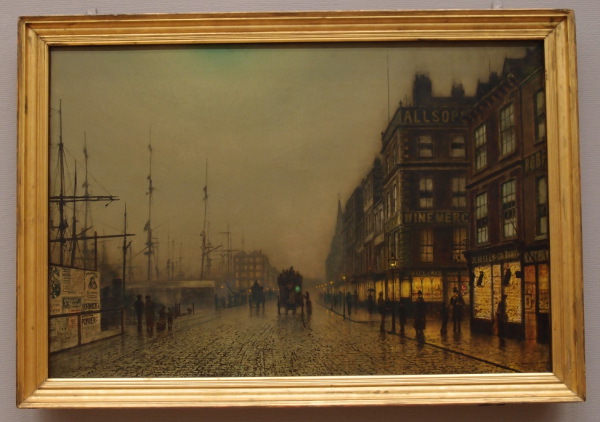
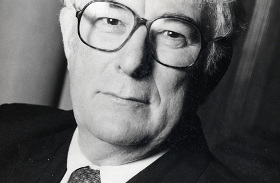
I've never managed to read poetry well. I often find it hard to read and parse, hard to find the rhythm and then perhaps hard to put aside and come back to. Poetry has been such a central part of our literary tradition however that I feel drawn to trying again every now and then. I want to "get" poetry.
.jpg)
Part of the problem I have is knowing how to speak the poem properly: picking up the proper cadence, the pauses and breaks. It's very different to prose and the way it is written down and structured sometimes seems to make it harder to get through. Hearing a poem read well helps a lot, and there have been quite a few learning opportunities recently.
The Radio 4 program Radio Heaney last week was a very good retrospective of some of the great man's radio appearances over the years. He was deservedly popular so we're lucky to have plenty of recordings of him and his work. His reading of Digging is beautiful and moving.
On Saturday, Jeremy Irons read T.S. Eliot's Four Quartets which I am looking forward to listening to (maybe with the text in front of me).
In addition, I've been wanting to read Clive James' well received translation of Dante, Alice Oswald's Memorial and more Eliot. The list is a lot longer and stretches to the classics like Byron and Keats. Maybe some practice and persistence. Like I say, poetry takes a little bit more work.
Digging
By Seamus HeaneyBetween my finger and my thumb
The squat pen rests; snug as a gun.
Under my window, a clean rasping sound
When the spade sinks into gravelly ground:
My father, digging. I look down
Till his straining rump among the flowerbeds
Bends low, comes up twenty years away
Stooping in rhythm through potato drills
Where he was digging.
The coarse boot nestled on the lug, the shaft
Against the inside knee was levered firmly.
He rooted out tall tops, buried the bright edge deep
To scatter new potatoes that we picked,
Loving their cool hardness in our hands.
By God, the old man could handle a spade.
Just like his old man.
My grandfather cut more turf in a day
Than any other man on Toner’s bog.
Once I carried him milk in a bottle
Corked sloppily with paper. He straightened up
To drink it, then fell to right away
Nicking and slicing neatly, heaving sods
Over his shoulder, going down and down
For the good turf. Digging.
The cold smell of potato mould, the squelch and slap
Of soggy peat, the curt cuts of an edge
Through living roots awaken in my head.
But I’ve no spade to follow men like them.
Between my finger and my thumb
The squat pen rests.
I’ll dig with it.
The BBC Radio 4 program Poetry Please is often a pleasant part of a Sunday afternoon.
Lincoln's Inn is well known as one of London's "Inns of Court", the professional bodies barristers belong to. A large square to the east of The Strand, Lincoln's Inn Fields also contains a very good little museum, Sir John Soane's Museum. Visiting the museum to have a look at the Alan Sorrell exhibition, I had a good look around Soane's house.
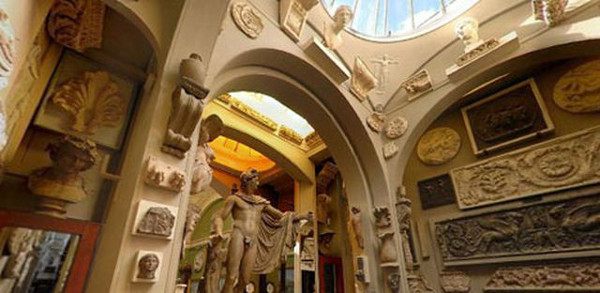
Sir John Soane was an architect from very humble origins (son of a bricklayer) who married into a lot of money. He had a long and very successful career, designing buildings like the (old) Bank of England building and Dulwich Picture Gallery.
The house is a well preserved time capsule from the 18th Century and supposedly not too different from the way he left it when he died in 1837. It is absolutely full of stuff: paintings, books, sculptures, furniture, drawings, clocks, architectural models, roman and greek antiquities. Even a crypt containing the the sarcophagus of Seti I (from 14th Century Egypt). It really is an amazingly eclectic and diverse collection of things and quite a warren of rooms, corridors and floors.
It's quite cramped in places, with so much crammed inside (and visitor numbers are restricted), but well worth a visit. It's free as well.
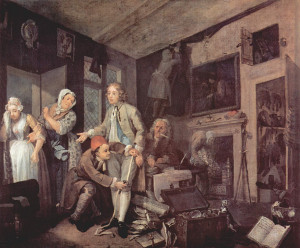
Thinking about who my person of the year would be, in the spirit of Time magazine.
I considered Edward Snowden, the NSA whistleblower. Like what he did or not, he's certainly made a massive impact on the debate over our government, privacy and counter-terrorism/crime.

In the end however, I feel that the person who was most inspiring in 2013 was Malala Yousafzai, the young Pakistani girl who spoke out for education and against the Pakistani Taliban.
At the age of 12 she was writing a blog that was picked up by the BBC. At 15 the Taliban shot her. She recovered from very bad injuries and now continues to speak out, even though she may never be able to return home because of the continued danger to her life.
A very brave girl and a real inspiration. This is the sort of person a country like Pakistan needs. More Malala and much less of Ehsanullah Ehsan.




